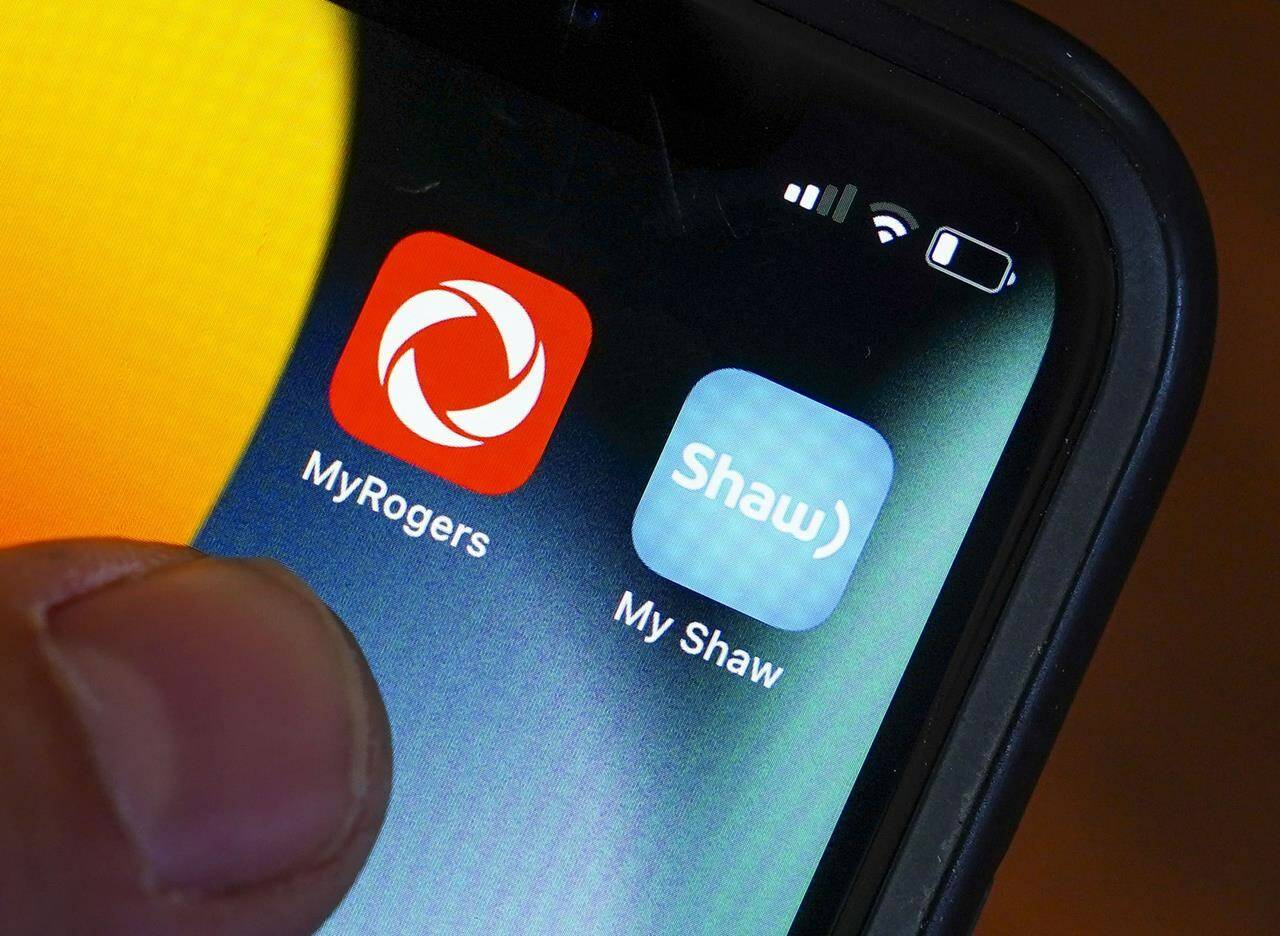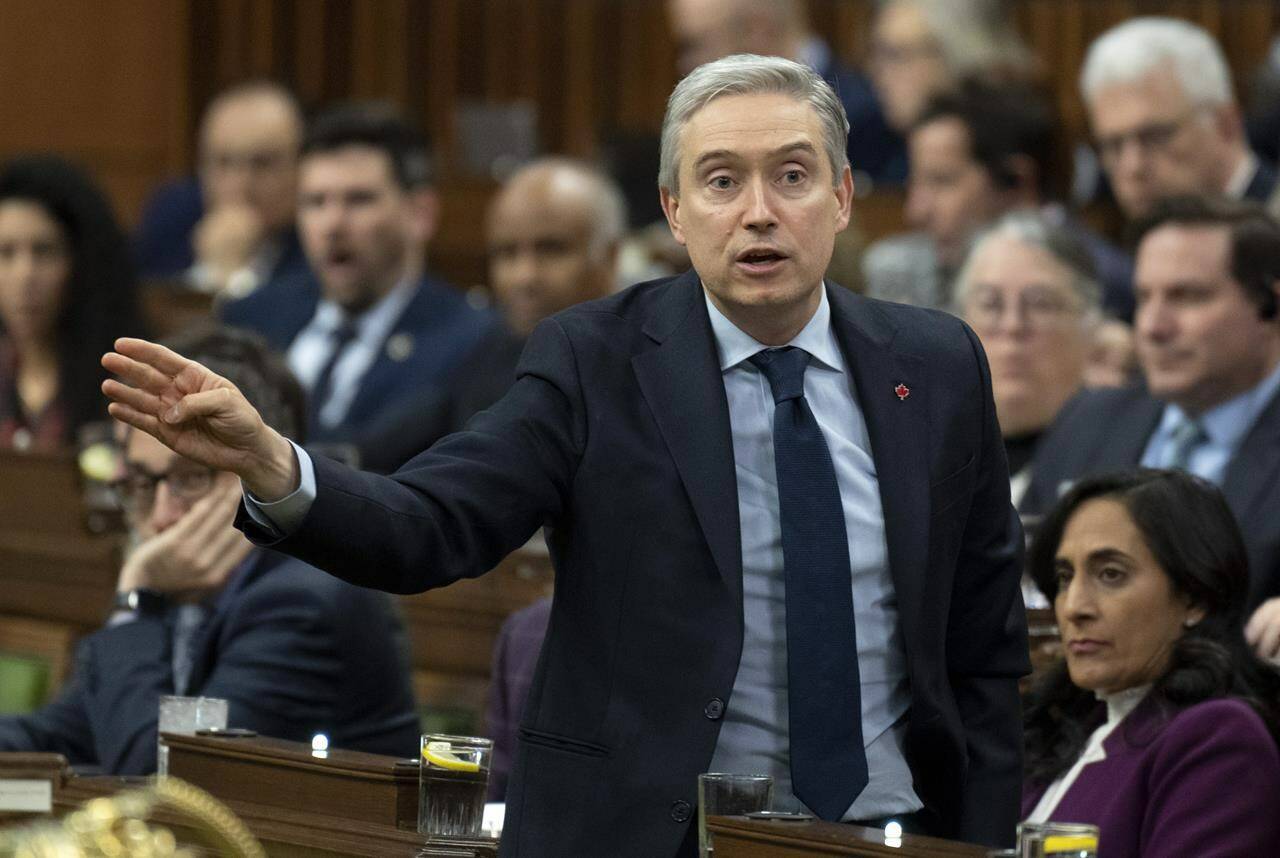Rogers Communications Inc’s $26-billion takeover of Shaw Communications Inc. cleared the final regulatory hurdle Friday, more than two years after the deal was first announced.
Federal Industry Minister François-Philippe Champagne approved the transfer of Shaw-owned Freedom Mobile’s wireless licences to Quebecor Inc.’s Videotron, which operates in Quebec and some border regions of Ontario., paving the way for the deal to be completed.
Rogers announced its deal to buy Shaw in March 2021 and the deadline to close the deal has been pushed back numerous times. The three companies said Friday they expected to complete the transaction by April 7.
Champagne said Ottawa has secured 21 legally enforceable commitments from Rogers and Videotron to bolster competition in the sector and “actually drive down prices.”
Rogers and Shaw had agreed in June 2022 to sell Freedom Mobile to Videotron for $2.85 billion in an attempt to ease competition concerns raised by the original proposal.
Champagne had stipulated that he would “expect to see” Freedom’s wireless prices in Ontario and Western Canada lowered by about 20 per cent over, putting them in line with Videotron’s current Quebec offerings.
In response, Videotron said it would accept the conditions, agreeing to incorporate them in a revised deal.
On Friday, the minister said Ottawa’s conditions “should not be taken lightly.” He said they would ensure a “fourth national player can go toe-to-toe with the Big Three and actually drive down prices.”
The conditions include Rogers establishing a second headquarters in Calgary and adding 3,000 new jobs based in Western Canada “in the coming months” which it must maintain for at least 10 years.
It must also spend $5.5 billion to expand 5G coverage and additional network services, as well as a further $1 billion to connect rural, remote and Indigenous communities.
Videotron must offer plans that are at least 20 per cent lower than its competitors and spend $150 million over the next two years to upgrade Freedom Mobile’s network. It is restricted from transferring any Freedom Mobile licences for a decade.
The minister also announced his department would launch a review of Canada’s spectrum transfer framework, noting one has not been conducted in nearly a decade.
Champagne vowed to “be like a hawk on behalf of Canadians” to ensure the companies adhere to the conditions.
“Make no mistake. We will be monitoring their performance under these terms and conditions and making sure that we enforce the terms of these contracts on behalf of Canadians,” he said.
Asked how he will enforce the conditions, the minister told reporters, “I’m a lawyer and it’s a contract,” before adding that the deal is subject to arbitration.
“I would not mess with the regulator,” he said. “It’s never a good thing, not only if you have a contract with conditions, but on top of that, just think about the penalties.”
If Rogers breaches its conditions, it must pay $1 billion in damages, the minister said. Videotron would be subject to $200 million if it fails to meet its commitments.
“If Canadians do not begin to see clear and meaningful reduction in prices within a reasonable amount of time, I will have no choice but to seek further legislative and regulatory powers to drive down prices in Canada,” Champagne said.
In January, the Federal Court of Appeal rejected the Competition Bureau’s bid to quash the deal.
The regulator, which had argued that approving the merger would reduce competition and result in higher cellphone bills, poorer service, and fewer options for consumers, had hoped the higher court would overturn a previous ruling from the Competition Tribunal in favour of the pact.
Instead, the court sided with the tribunal’s view that “there was no substantial lessening of competition” at risk by approving the deal.
The companies had previously tried to solve the impasse with the Competition Bureau via mediation through last summer and fall, but that process was unsuccessful. Rogers and Shaw had agreed not to close their deal until either reaching a negotiated agreement with the regulator or a ruling from the Competition Tribunal.
Clearing another regulatory obstacle, the Canadian Radio-television and Telecommunications Commission (CRTC) approved Rogers’ acquisition of Shaw’s broadcasting services in March 2022 subject to certain conditions.
That included a requirement for Rogers to contribute $27.2 million to various initiatives and funds, five times what the company had originally proposed.
The CRTC, which was only tasked with assessing broadcasting elements of the transaction, said 80 per cent of that sum must be directed to the Canada Media Fund, the Independent Local News Fund and certified independent production funds.
Rogers must also create an Indigenous news team with journalists in all provinces where the company provides news content to deliver stories to First Nations, Métis and Inuit communities.
As part of the agreement, Rogers will acquire 16 cable services based in Western Canada, a national satellite television service and other broadcast and television services.
Earlier this month, Champagne told reporters “I’m the holdup” when asked about the agreement’s constantly shifting deadline.
“My mission has been that this undertaking is to drive down prices. That’s the only thing that was the driving force behind it. That’s why it took so long,” he said Friday.
He told reporters that the Liberal government has “changed the game” for telecommunications companies in Canada, but promised “this is not the end of it.”
“If we don’t see prices coming down … I’ll be seeking additional power to make sure that we drive down prices and at that time, everything is on the table,” he said.
—Sammy Hudes, The Canadian Press
READ MORE: Academics, smaller telecoms say Rogers shouldn’t be allowed to buy Freedom Mobile
Federal PoliticsInternet and TelecomMedia industry


